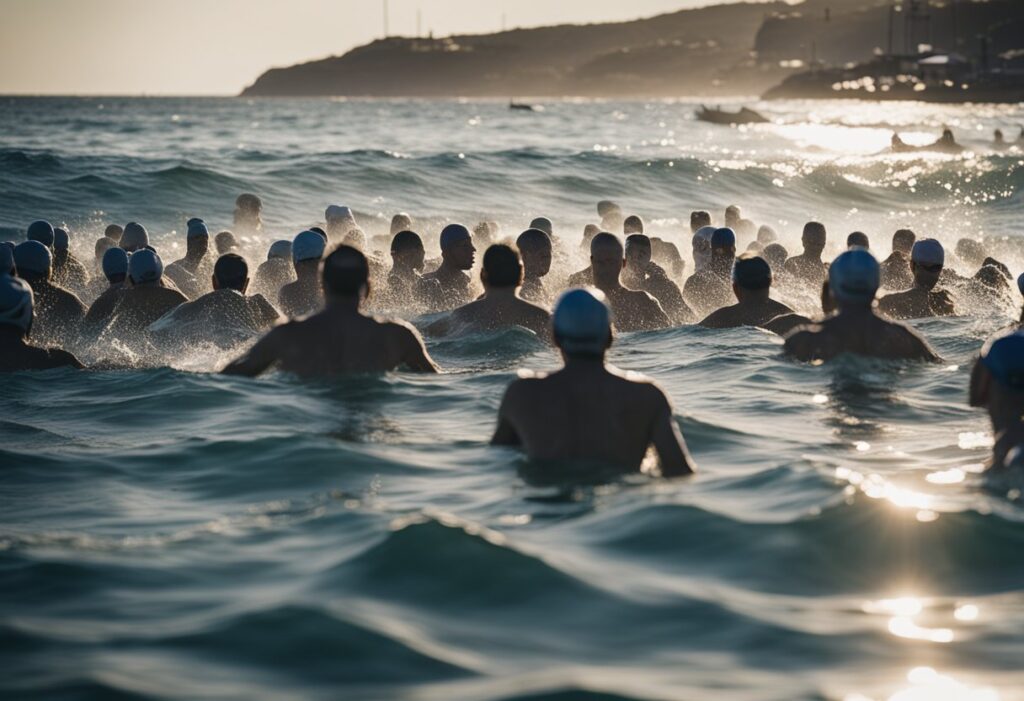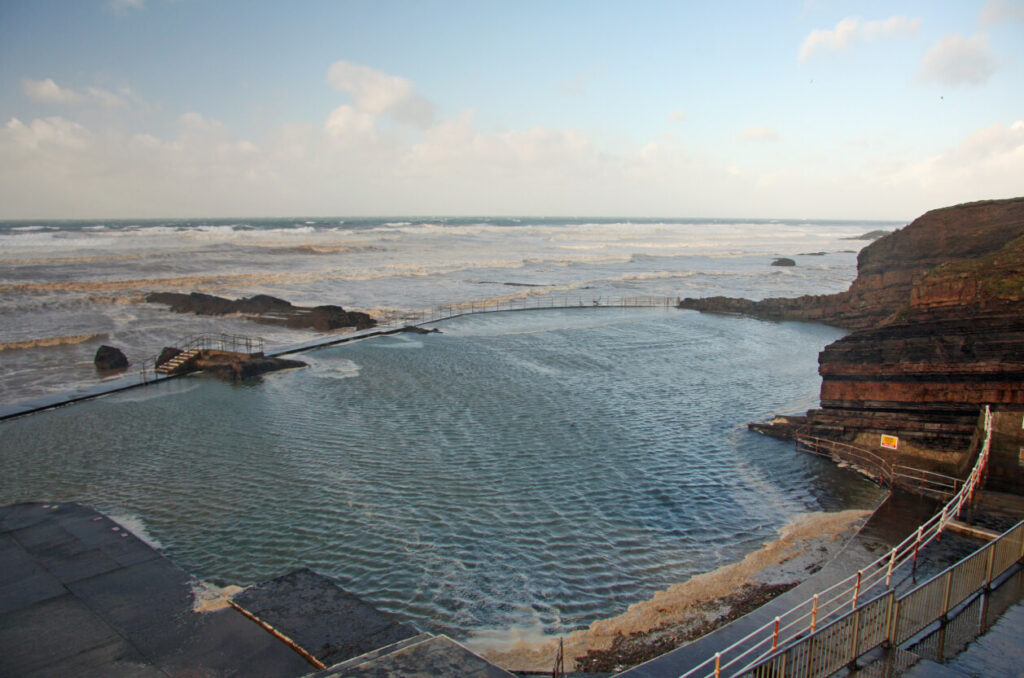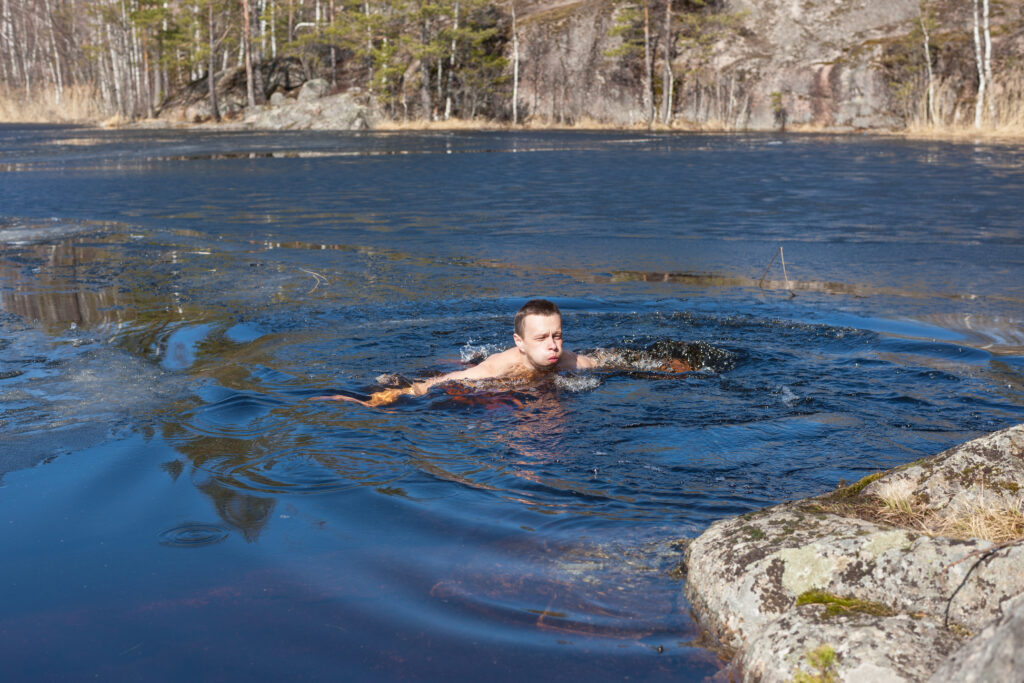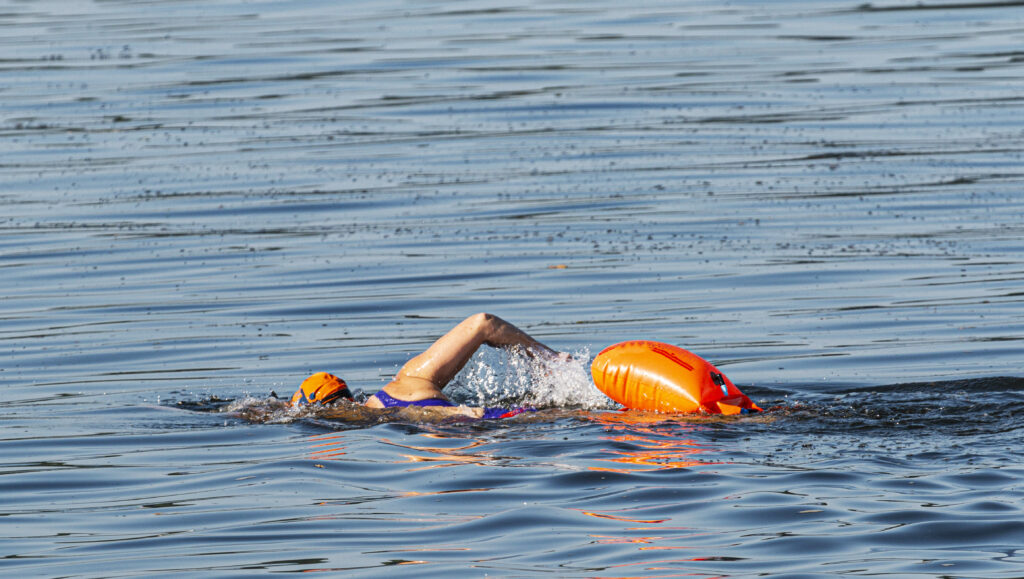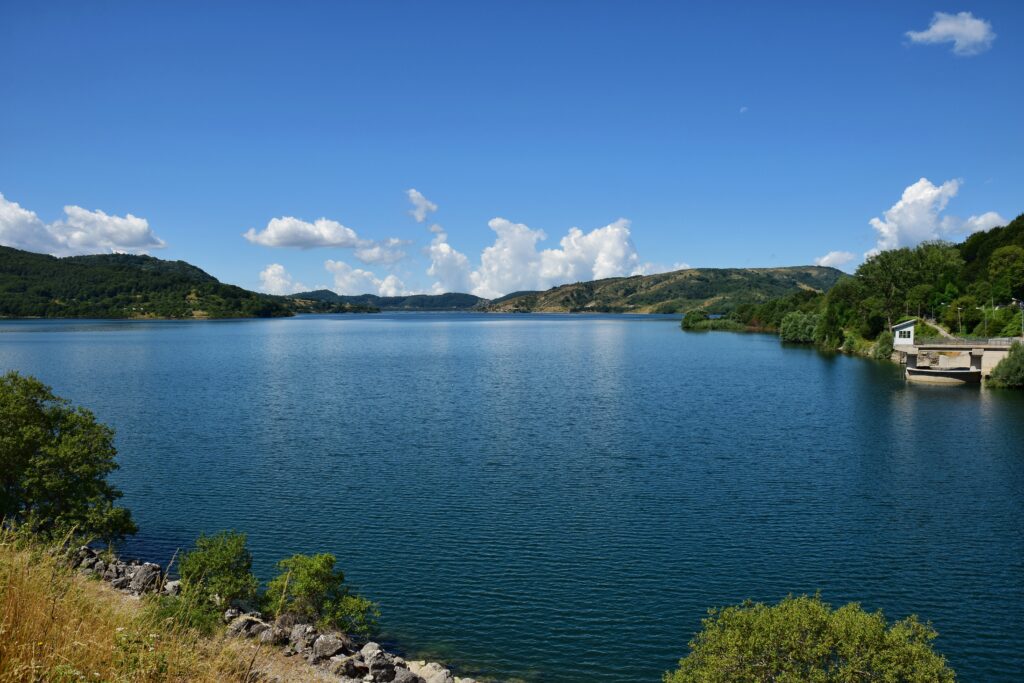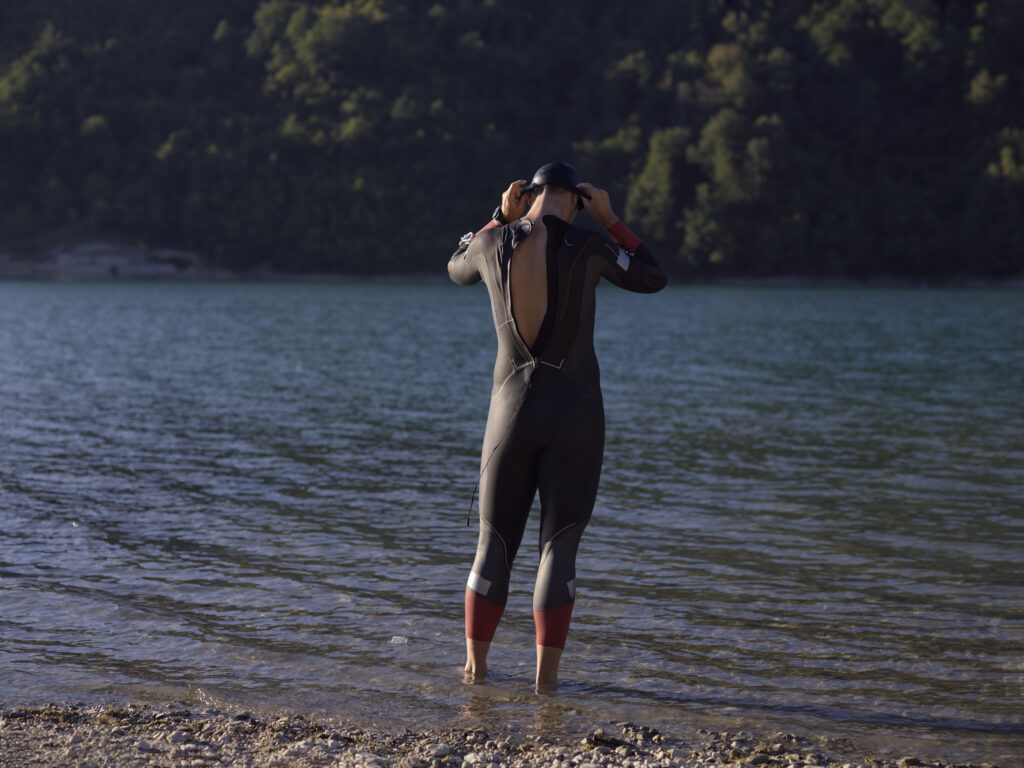Outdoor swimming events provide a unique challenge and offer a refreshing break from the confines of indoor pools. Among these, the UK boasts a range of competitions that attract thousands of participants annually, with some events standing out due to their scale and the level of participation they inspire. The most notable is the Arla Great North Swim, which has grown to become the biggest open water swimming event in the UK.
Located in the stunning Lake District National Park, the Great North Swim offers a variety of distances to cater to different skill levels, from beginners to seasoned swimmers. This inclusivity is part of what makes it a premier event in the outdoor swimming calendar. Individuals interested in participating can register on the event’s official website, which offers detailed information on how to get involved, the various distances available, and tips for first-time open water swimmers.
In addition to individual participation, the Great North Swim is also a family-friendly event, with options for children and adults to swim together. This inclusivity ensures that the event not only serves as a competitive sporting challenge but also as a celebration of the swimming community in the UK, encouraging a love for the sport across all ages.
Overview of Major UK Outdoor Swimming Events

The UK boasts a variety of major outdoor swimming events that cater to every level of swimmer, from the casual enthusiast to the seasoned athlete. These events offer a unique combination of challenge, scenic beauty, and camaraderie.
Survey of Top Outdoor Swim Challenges
The Outdoor Swimming Society (OSS) is a well-known entity that hosts numerous swims across the UK, including the famed sea swims and the iconic Dart 10k, which is often seen as a bucket-list event for open-water enthusiasts. Equally challenging is the Chiltern Endurance Weekend, which tests swimmers with its rigorous courses in stunning natural settings.
In terms of multisport events, the UK features prestigious competitions such as the Ironman UK and Half Ironman, which include open-water swimming as a key component of the race alongside cycling and running. The Ironman series is recognised for its grit and prestige within the triathlon community.
Furthermore, there’s an emerging trend in ‘swimrun’ events, a hybrid of open water swimming and cross-country running, like the Ötillö Swimrun, adding a fresh dimension to multisport competitions.
Annual Calendar of Significant Events
Each year, the UK’s outdoor swimming calendar is punctuated by significant events, attracting swimmers from all over the globe. One notable event is the English Riviera Swim, set against the beautiful backdrop of the Devon coast, where the bustling sea swim sees participants race in the crisp blue waters.
For those seeking freshwater challenges, the Roadford Lake Swim provides an opportunity to swim amidst the tranquillity of countryside landscapes. And for athletes looking to make an environmental statement through their sporting endeavours, the new ‘The One for the Planet’ swim calls eco-minded individuals to action.
Aquathlon, aquabike, and duathlon events also populate the calendar, allowing competitors to mix swimming with running and cycling in varying combinations and distances, proving that the UK outdoor swimming scene is as diverse as it is vigorous.
Event Participation

Participating in the UK’s largest outdoor swimming events presents a challenge that attracts countless swimmers each year. Individuals looking to get involved should be aware of the precise criteria for entry and the steps needed to register.
Criteria for Entry
Each outdoor swimming event in the UK may have its own set of entry requirements. Typically, there are age restrictions, with participants needing to be 18 years or older. Some events allow younger swimmers if they are accompanied by an adult or have a consent form. Additionally, there might be prerequisites regarding swimming proficiency, often necessitating proof of the ability to swim a certain distance in open water. Events like the swim between Bournemouth and Boscombe Piers are widely recognised as substantial feats, underlining the necessity for prior swimming experience and a certain level of physical fitness.
Registration Processes
To register for an event, one must usually complete an online form on the event’s official website. For example, to sign up for the swim between Bournemouth and Boscombe Piers, a prospective participant will need to visit the designated event page. This event, known for being one of Europe’s largest swimming challenges, typically requires personal information, a registration fee, and often a medical declaration. Furthermore, swimmers are encouraged to sign up well in advance, as popular events reach capacity quickly.
Registration often includes the option to raise funds for a chosen charity, with many swimmers taking advantage of this opportunity for additional motivation and support. It’s important for participants to note that a support team or personal support boat may be necessary for some events, especially those covering longer distances in open water.
Participants should ensure they are clear on what is provided by the organisers and what they must bring or arrange themselves. This may include safety equipment, nutrition, and transportation to the starting line. With thorough preparation, swimmers can embrace the challenge and have a rewarding experience.
Health and Safety Guidelines

In the UK’s largest outdoor swimming events, safety is paramount. These guidelines ensure that participants are well-equipped and supported throughout the event, focusing on wetsuit and equipment regulations as well as water safety measures.
Wetsuit and Equipment Regulations
Wetsuits: It is essential that participants use a wetsuit appropriate for the water temperatures encountered in the UK. Most events have mandatory wetsuit requirements unless the water is warm enough to safely swim without them. For example, the Swim England Handbook provides comprehensive guidance on swimwear, among other regulations.
Equipment: In addition to wetsuits, swimmers must often have a brightly coloured swimming cap provided by the event organisers for visibility. Safety buoys which are towed during the swim may also be required for open water events to increase swimmer visibility and provide a rest spot if needed.
Water Safety and Support Services
Safety Cover: During any swimming event, the presence of safety cover is non-negotiable. This includes lifeguards, safety boats, and kayaks, all strategically placed to ensure swimmers are never more than a specified distance from safety – typically no more than 50m.
Support Services: Proper planning and organisation is critical for the safe conduct of swimming events. Participants must follow event-specific safety instructions which often include pre-swim safety briefings, guidance on understanding water currents, and knowing the course layout. Additionally, medical support should be available on-site to manage any emergencies according to HSE’s guidance for running events safely.
Training and Preparation

For those aiming to participate in the UK’s largest outdoor swimming events, tailored training plans and nutrition strategies are essential. Whether one is a novice or an experienced swimmer, preparing both physically and nutritionally will greatly enhance performance and enjoyment of the challenge.
Training Plans for Different Experience Levels
- Frequency: Aim for 2-3 swims per week.
- Distance: Gradually increase distances, starting at 400 metres and building up.
- Technique: Focus on refining stroke and developing open water skills, such as sighting and acclimatising to cold water.
Intermediate Swimmers:
- Frequency: 3-4 swims per week with cross-training (e.g., running) to maintain overall fitness.
- Intensity: Incorporate interval training for increased endurance.
- Distance: Regularly swim distances of 1.5-2.5 kilometres.
Advanced Swimmers:
- Frequency: 4-5 swims per week, supplemented with strength training.
- Intensity: High-intensity interval training (HIIT) in the pool and longer, steady-state swims for endurance.
- Distance: Push beyond 5 kilometres, simulating event conditions when possible.
Nutrition and Conditioning Advice
Nutrition:
- Before: Carbohydrate-rich meals 3-4 hours before training to fuel the muscles.
- During: Hydration with electrolytes during longer sessions to maintain energy levels.
- After: Protein intake post-training aids in muscle recovery.
Conditioning:
- Strength Training: Core exercises help maintain stability and streamline position in the water.
- Flexibility: Regular stretching can improve range of motion and prevent injuries.
- Recovery: Adequate rest between sessions is critical for muscle repair.
Both the training and nutrition regimens for a swimmer should be adjusted to their individual needs and the specific challenges of the event they are preparing for. Cross-training, such as running, can be beneficial for improving cardiovascular fitness and should be integrated into the weekly routine.
Travel and Accommodation
When planning to attend the UK’s largest outdoor swimming events, participants should consider both suitable accommodation close to the event venue and efficient transportation for themselves and their gear.
Local Stays near Event Locations
Torquay: For events like sea swimming in locations such as Torquay, a plethora of hotels and bed and breakfast options cater to participants’ preferences. They can choose from seaside views to cosy, inland retreats.
Roadford Lake: Visiting Roadford Lake for an event means looking for lodgings that offer easy access to the lake. Cabins and campsites nearby provide an immersive natural experience.
Local Lakes and Blackpool Sands Beach: In the vicinity of local lakes and at Blackpool Sands Beach, swimmers often find a range of accommodation from luxury hotels to affordable guesthouses that support the needs of swimmers, often with facilities to dry wet gear.
Lough Cutra Castle: The grandeur of events at Lough Cutra Castle is matched by numerous local cottages and boutique stays, creating an enchanting experience for attendees.
Transportation Tips for Swimmers and Equipment
When travelling to river, lake or sea events, it’s crucial to plan for:
- Public transport: Buses and trains may have specific requirements for carrying large sporting equipment, so checking in advance is vital.
- Driving: If using a personal vehicle, ensure there’s enough space for equipment and that roof racks or trailers are secure.
- Local transport: Once at the destination, taxis or local shuttles can help bridge the gap between accommodation and the event site; booking in advance could be advantageous.
- Equipment handling: Be aware of how to best protect and transport wetsuits, goggles, and other swim gear. Waterproof cases and bags can be indispensable for safeguarding electronics.
This section is provided in an informative nature and is based on the logistics related to travelling and staying at UK outdoor swimming events. It does not endorse any specific services or accommodations.
Spectator Information

When attending the UK’s largest outdoor swimming events, spectators have the opportunity to experience the thrilling races first-hand, amidst often stunning scenery. Knowing where to watch and how to support can enhance the experience considerably.
Best Spots for Viewing Competitions
Ideal Locations: For most events, organisers typically designate prime viewing areas along the course. At an event like the Arla Great North Swim, spectators might gather around the lakeside areas where the majestic Lake District serves as the backdrop. Access to these areas will be directed clearly by event signage and staff.
Visibility and Comfort: It’s recommended that spectators arrive early to secure spots with unobstructed views of the race. Look for areas higher up or on a clear stretch of the race to see the swimmers’ techniques and strategies unfold.
Supporting Participants during the Event
Encouragement and Morale: Cheering on the competitors is a significant part of the event’s atmosphere. Phrases like “Keep going!” and “You’ve got this!” can provide a much-needed morale boost.
Understanding the Event: Spectators should familiarise themselves with the race details, such as distances and key competitors, to provide informed and encouraging support. Event programmes or apps are often available, detailing the day’s schedule and participants.
By focusing on these aspects, spectators play a pivotal role in the success of the event, contributing to the dynamic and supportive environment that defines the UK’s outdoor swimming community.
Volunteering Opportunities
Volunteering at swimming events in the UK presents a unique opportunity for individuals to contribute to the success of major competitions, including the largest outdoor swimming event, while gaining valuable experience. Volunteers are integral to the operation of these events and can get involved in various capacities.
Roles and Responsibilities of Volunteers
Volunteers at British swimming events can take on a multitude of roles to ensure events run smoothly. Responsibilities range from administrative tasks to hands-on event management.
- Event Set-Up: Preparing the venue, including layout and signage.
- Timekeeping: Recording athletes’ race times with precision.
- Stewardship: Guiding spectators and managing seating areas.
- Safety: Monitoring the pool area to ensure the wellbeing of participants.
These roles require volunteers to have strong communication skills, a proactive attitude, and a willingness to work in a team setting.
Benefits of Volunteering at Swimming Events
Volunteering at swimming events not only supports British Swimming but also provides personal rewards.
- Skill Development: Volunteers gain organisational and event management skills.
- Networking: Interacting with professionals in the sports industry offers extensive networking opportunities.
- Community Contribution: Volunteering gives a sense of satisfaction from contributing to the community and the promotion of aquatic sports.
Participants in these voluntary roles usually find the experience both enriching and enjoyable, creating memories that last a lifetime alongside an opportunity to watch British athletes compete at the highest level.
Post-Event Activities
After the thrill of an outdoor swim event, participants have numerous opportunities to unwind, celebrate, and explore the local area. These activities can be an excellent way for swimmers and teams to relish their achievements and for spectators to enjoy the event’s locale.
Celebratory Events for Swimmers and Teams
Organisers often arrange post-race celebrations that cater to the participants’ sense of accomplishment. These may include awards ceremonies, where swimmers and teams are applauded for their performance, and social gatherings featuring local cuisine and entertainment. Swimming clubs usually also host private functions where team members can share their experiences of the race and enjoy a sense of camaraderie.
Local Attractions and Leisure Opportunities
The host location of the swim event frequently boasts a variety of attractions that participants can enjoy post-race. For instance, in coastal areas, swimmers might take the chance to relax on the beach or explore local seaside towns. Inland events near historic sites or natural parks offer a different array of activities, such as guided tours or tranquil walks to appreciate the local wildlife and scenery. These activities not only complement the event experience but also benefit the local economy.
Environmental Awareness

As outdoor swimming events grow in popularity across the UK, environmental sustainability becomes a crucial aspect. Event organisers and participants are embracing measures to protect and positively contribute to natural settings for present and future generations.
Sustainability Initiatives in Open Water Events
Open water swimming events in the UK are increasingly implementing strategies to minimise environmental impact. For instance, UK Sport has publicised its Environmental Sustainability Strategy, aiming for high-performance sports, including swimming, to positively affect the environment by 2040. Organisations like Outdoor Swimmer are crucial, as they frequently promote environmental awareness and encourage sustainability within the swimming community.
Eco-Friendly Practices for Participants
Participants can also play a significant role in environmental conservation by following eco-friendly practices. They are encouraged to:
- Avoid single-use plastics: Carrying reusable water bottles and avoiding disposable items during events.
- Respect local wildlife: Ensuring that no disturbance is caused to the natural habitat.
- Carpool or use public transportation: To reduce carbon emissions associated with travel to swimming events.
By integrating these practices, each swimmer contributes to the broader initiative led by organisations like One for the Planet to foster sustainable habits within sports and leisure activities.
Event Organisers and Contacts
Participating in the UK’s largest outdoor swimming events requires knowing the right organisers and their contact channels. This section provides details on key organisations and resources for further information to get involved effectively.
Key Organisations and Their Roles
- Outdoor Swimmer Magazine: They list various outdoor swimming events across the globe, including key UK events. This magazine’s event page is a vital resource for finding challenges like the ATW Chiltern Endurance Weekend.
- TimeOutdoors: A comprehensive source for UK swimming events such as the famed Dorney and Marlow swims. Their website details event dates, distances, and how to register.
Organisers for specific events like the ATW Chiltern Endurance Weekend can usually be contacted directly through the event listings on these platforms. These listings often provide email addresses or contact forms to facilitate enquiries.
Resources for Further Information
For detailed information on the UK’s outdoor swimming events and how to prepare, the following resources are invaluable:
- Organiser Websites: Most event organisers have their own websites with contact forms, FAQs, and additional resources for participants.
| Event | Contact Information |
|---|---|
| ATW Chiltern Endurance | Listed on TimeOutdoors |
| Dorney Lake Swims | Specifics available on event page |
| Marlow Swims | Direct enquiry via event listing |
- Local Swimming Clubs: These clubs can offer advice and support for those looking to participate in large events. They may also have insider knowledge about event organisers.
By utilising these resources and reaching out to the organisers directly, individuals can gather all the necessary information to participate in some of the UK’s most significant outdoor swimming events.
Frequently Asked Questions

The UK offers a vast array of open water swimming challenges each year, attracting thousands of participants. Below are some common questions for those looking to dive into these events.
What are the premier open water swimming challenges scheduled for 2024 in the UK?
In 2024, the UK’s open water swimming calendar is highlighted by Europe’s biggest swimming event, with participants swimming 1.4 miles between Bournemouth and Boscombe Piers.
How does one participate in the Great North Swim and other similar UK events?
To take part in the Great North Swim and similar events, one must typically register online through the event’s official website. It’s essential to book early as places can fill up rapidly.
What must one do to prepare for swimming in Lake Windermere’s major events?
Preparation for swimming events at Lake Windermere includes a mix of physical training, familiarisation with cold water swimming, and ensuring suitable swimwear and safety gear.
Are there particular qualifications required to join major UK open water swimming events?
Most UK open water events require swimmers to have a certain level of swimming proficiency and the ability to swim the event distance comfortably in open water.
How many individuals regularly partake in open water swimming across the UK?
Thousands of individuals are involved in open water swimming across the UK. A recent report highlights that a significant percentage of people consider outdoor swimming as part of their identity.
What guidelines must one follow to ensure safe open water swimming in the UK?
Swimmers should follow guidelines that include wearing proper swimwear, being aware of water conditions, understanding safety signage, and never swimming alone. Being informed about issues like sewage pollution is also important for safety and health.

